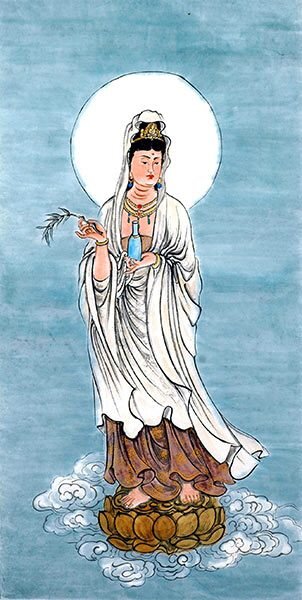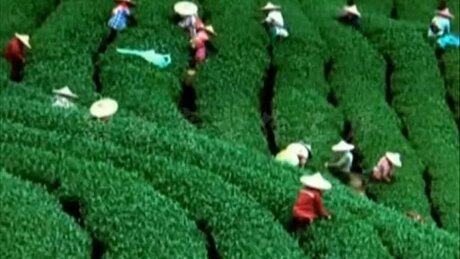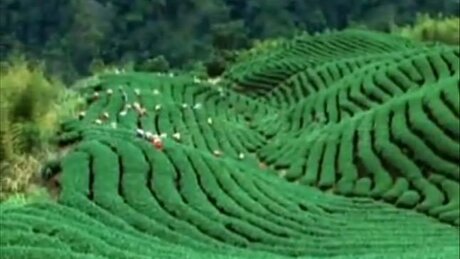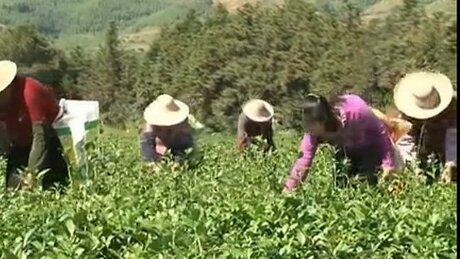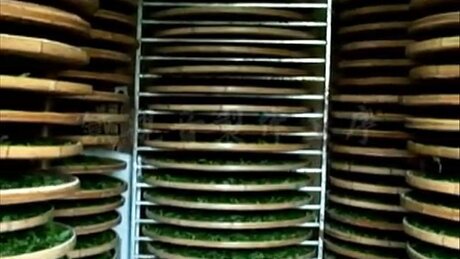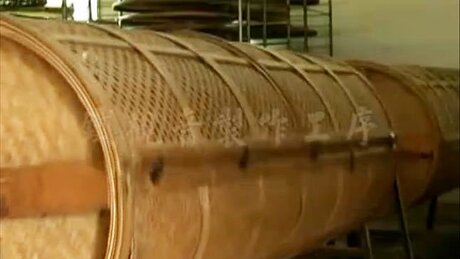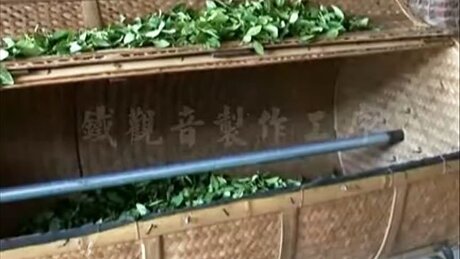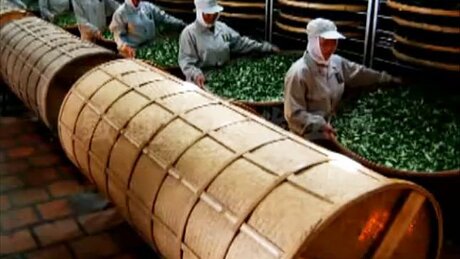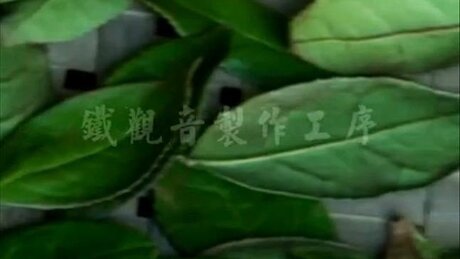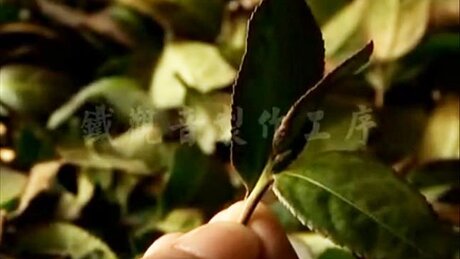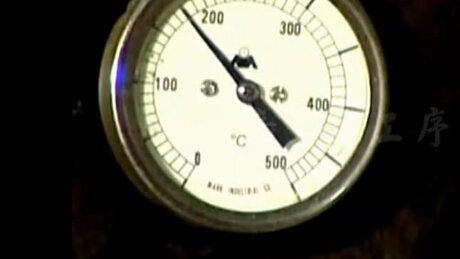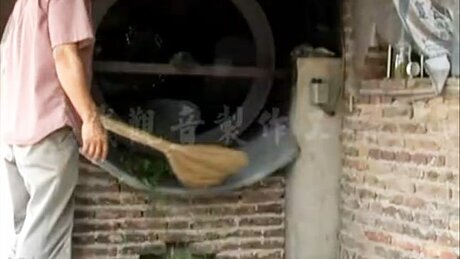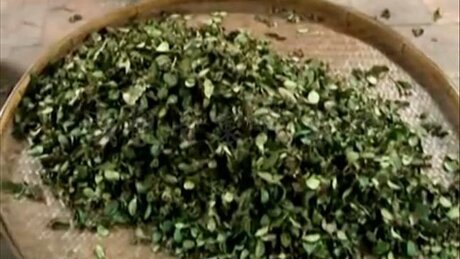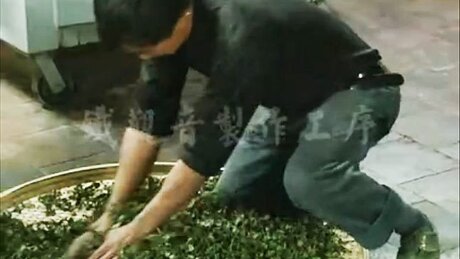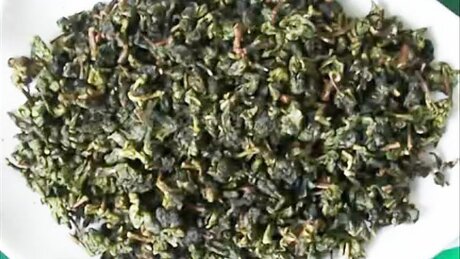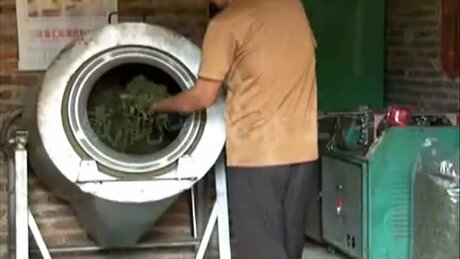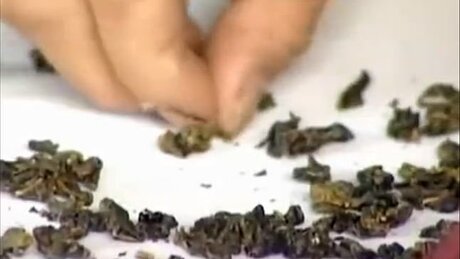Tieguanyin is the most well known South Fujian oolong with 300-year history. There is no record of when and in what way it appeared but the legend narrates as follows.
In Xiping village of Anxi county, Fujian there lived a poor peasant who worshiped the Goddess of mercy Guanyin. Followers believe that she helps all the unfortunate, offers helping hand to the abased and miserable, protects the week and oppressed. The peasant venerating her kindness and good deeds could not indifferently pass by the old temple that long ago had been upraised in her honor but abandoned later. Every morning on his way to the field he made a stop to clean the temple and decorate it with fresh flowers. On holidays he lit candles and offered sweets and fruits. Year after year he served the goddess asking nothing in return.
But once a bad crop constrained the peasant to prepare for a starving winter. And then the Goddess of mercy Guanyin came to him in his dream. She praised the farmer for devotion and promised to reward him with a special gift, which could be found at the back of her temple. In the morning inspired peasant went to the temple. He walked it around several times and failed to find anything but bushes. Then after more detailed examination he realized that those were not simple bushes. They were tea plants. The farmer plucked some leaves, which appeared to be very dense and heavy as if made of iron. He gathered an armful, brought them home and brewed the tea. The resulting beverage was unbelievably tasty and fragrant. He treated all his neighbors, friends and relatives. All of them liked the tea. The farmed gathered plenty of tea from the bushes, sold it and made enough money to survive winter in bad harvest year.
Later he shared the cuttings of the plant with all villagers so everybody could cultivate this splendid tea. Everybody enjoyed the drink, its flavor was praised all around the Empire and the village flourished. Soon the neighboring villages joined the tea trade and little by little all the area started to grow tea. To this day Anxi county is famous for its tea all over the world. And farmers in honor of the venerated goddess have called this wonderful tea «The Iron Goddess of Mercy» — «Tieguanyin».
Formerly oolong used to be strongly roasted. This allowed for better storage and endurable transportation preserving its aroma. But in former several decades with the invention of refrigerators, fast delivery and other options lightly roasted oolongs are becoming increasingly popular. Roasting degree may alter the flavor of the beverage significantly. Roasting takes away astringency and feeling of freshness bringing mildness and sweetness instead. At different times of day each of these teas cheers in its own way. But usually every man has own favors.
In different villages of Anxi county produced tea differs in flavor. Most famous are four villages: Xiping, Xianghua, Gande and Changkeng. Although Tieguanyin originating therefrom is always recognizable, its satiation, savors and dominating notes of flavor, its intensity heavily depend on the harvesting region. Besides there are multiple processing techniques for these oolongs: aged, with leafstalk, made of the largest leaves, wet etc.
Tieguanyin is the cultivar in the first place. Best oolong is produced at its native soil — Anxi county.
Tieguanyin is gathered 4 times per year. Spring crop (in May) is most valued for the bright taste. Spring leaf contains the largest amount of nutrients.
Autumn gather (in October) is regarded as most fragrant, but its flavor is weak. Summer and winter crops are poor.
Harvested tea is left to wither for several hours so that excessive moisture could evaporate from the leaves.
In traditional production fine manipulation of tea begins with tossing of green leaves on trays, modern technology uses rotation in bamboo drums.
Drums are loaded with leaves and rotate automatically for several hours. Leaf edges break while its middle remains intact.
Although there is no need to shape the tea leaves (they will be ball shaped by the machine), tea leaf should release sap all over its surface.
Rounian (rolling) and baonian (cloth kneading) diverge from each other. Rounian breaks the leaf while baonian curls it in a ball shape.
Bāoniǎn curling is performed as follows: tea leaves are paced in a sack and which is twisted up tightly.
A sack is slowly rolled by the machine. This procedure is repeated several times until the tea leaves are properly curled.
Curled tea leaves are tangled and this machine untangles them. Therefore the tea undergoes a number of kneading, deblocking and roasting rounds.
Whenever the technologist decides, the tea is ready to be dried in the oven until completely finished. Drying continues for several hours.
Oolongs are brewed in boiling water at the rate of 7 grams per 100ml. The tea may be prepared traditionally in fast steepings. But there is a way of special ceremonial brewing of curled oolongs. As Chinese web-sites describe it: 1/3 of tea brewing vessel is filled with a tea. First steeping washes tea leaves. Second time the tea is infused for 30 seconds increasing the brewing time with every consecutive steeping. As a result from the very beginning the tea brews bright and rich and lasts 5–7 steepings.
Ceramics and porcelain will be a good choice. However ceremonies often use round shaped Yixing teapots made of zhōngni clay. You may well say it’s an ideal tea-ware for brewing Tieguanyin.
When brewing all oolongs first steeping is discarded to let the tea leaves better unfold and wash out dust of the broken leaf.
Strongly roasted tea can be easily stored for several years in tightly sealed tea canister or vacuum package. Storage of slightly roasted oolongs is more complicated. They also retain palatability for years but their flavor changes. Yet certain «freshness», which is so valued, in a course of time vanishes. Therefore to delay its aging packaged tea is better to be stored in a refrigerator.
Illustrated by screenshots from film: 鐵觀音製作.

